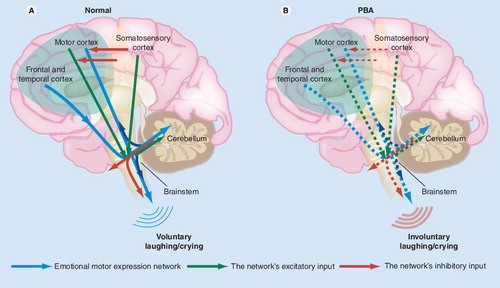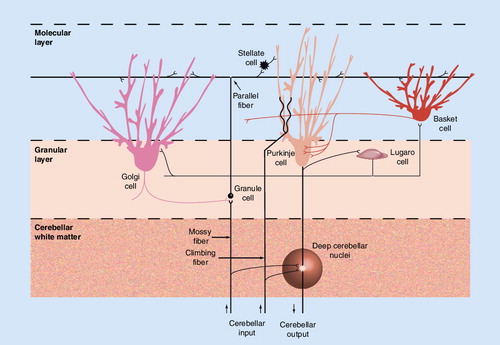Figures & data
Normally (A), an emotional motor expression network including cortico–ponto–cerebellar afferentation (upper blue arrows) enables the cerebellum to act as a ‘gate-control’ for the motor expression of emotion (lower blue arrows). Inputs to this network (green and red arrows) include an inhibitory influence from sensory cortices. In PBA (B), reduced inhibitory influence at the cortical level (broken red cortical arrows) results in increased aberrant activation within the network (broken blue arrows), giving rise to the motor manifestations of pathological laughing/crying.

In brief, mossy fibers (from, for instance, the pontine nuclei) synapse with granule cells, which in turn distribute signals, via parallel fibers, to several cells types. Of these, only Purkinje cells generate cerebellar cortical efflux (to the deep cerebellar nuclei). Among cerebellar interneurons, stellate cells, basket cells and Lugaro cells are all inhibitory, while climbing fibers (from the inferior olivary nucleus) are strongly disinhibitory. For their part, Golgi cells are remarkable for inhibiting granule cells.
